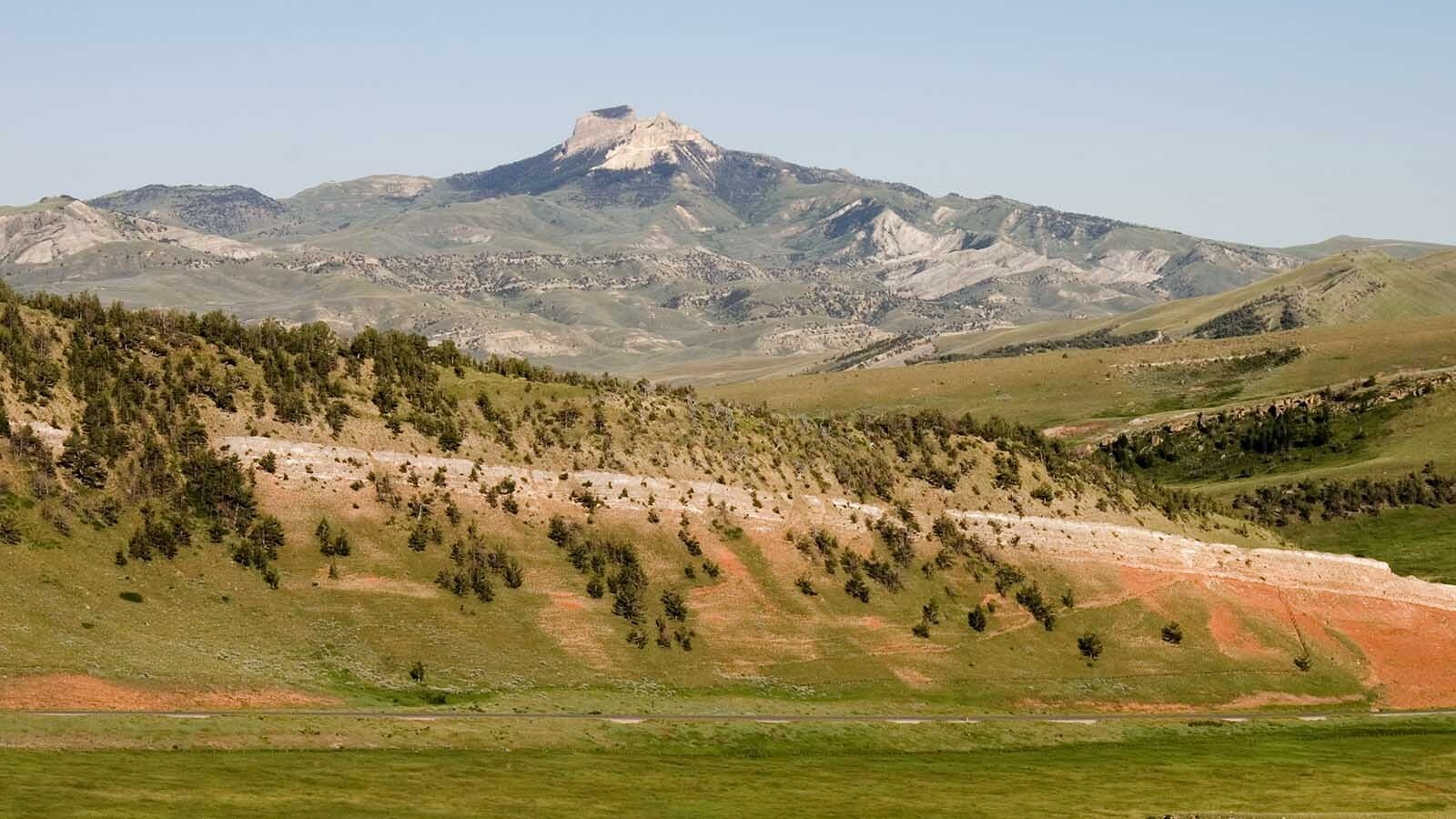Some are claiming air-dropped wildfire retarded has been ineffective and deadly to fish in California and the Northwest, but when used sparingly in Wyoming, it’s helped save cabins and other structures from fires, a U.S. Forest Service spokesman said.
“Half of the fire retardant dumped on wildfires in the entire country is dumped in California,” Andy Stahl, executive director of the Oregon-based Forest Service Employees for Environmental Ethics, told Cowboy State Daily.
Retardant also has been used on several major fires on the Medicine Bow-Routt National Forest and Thunder Basin National Grasslandin Wyoming, Forest Service Spokesman Aaron Voos told Cowboy State Daily.
But when used in Wyoming, it’s been targeted in specific areas, not dumped everywhere in massive amounts, he said.
‘The Town Burnt To The Ground’
A few years ago, firefighters were scrambling to save the town of Paradise, California, from a raging wildfire, Stahl said. The main body of the blaze was still miles away, but millions of “wind-blown” embers were raining down on the town.
“They (the embers) didn’t ignite the trees. They didn’t ignite the bushes. They ignited the homes,” he said. “The homes were mostly manufactured houses and mobile homes, which are like tissue paper.”
Air crews tried dumping fire retardant on the inferno, but to no avail, Stahl said, and “the town burnt to the ground.”
He doesn’t see a similar scenario playing out in Wyoming.
“Wyoming is such a charming place. You’ve got a lot of backcountry, and you don’t have million-person subdivisions right up against the national forest,” he said.
Under the right conditions, fire retardant has proven effective in protecting houses, cabins and other structures, Voos said. For instance, it helped save some structures during the massive 2020 Mullen Fire in the Snowy Range.
Because so much of Wyoming and the Northern Rockies is remote, fire retardant isn’t commonly used here, and it’s expected to stay that way, Sthal said.
Thousands Of Dead Fish
The active ingredient in fire retardant is “ammonium phosphate, fertilizer by any other name; the same fertilizer I used back when I was raising hay and sheep,” Stahl said.
“When it’s dumped into water, it ionizes into ammonia, and ammonia is toxic to fish,” he said.
In large bodies of water, that’s not much of a concern, he said, because enough water can dilute and disperse the ammonia before it can hurt fish. That’s why fertilizer runoff from agriculture into large rivers typically doesn’t have any bad effects.
But if concentrated fire retardant is dumped into high-altitude creeks and streams, that can be a different story, Stahl said.
“For instance, a single dump of retardant from a helicopter-borne bucket into a California creek killed dozens of endangered California steelhead trout,” he said. And near Bend, Oregon, a dump into a stream near a fish hatchery “killed thousands of trout for miles downstream.”
In southeast Wyoming, fire retardant dumps aren’t allowed near steams or other small watersheds, Voos said.
“There are whole maps that exist that state ‘do not use (fire retardant) in this area,’” he said.
Potentially toxic heavy metals are a byproduct of fire retardant, Stahl said.
In one instance, it was discovered that a municipal sewage treatment plant in Idaho was getting more heavy metals than it could handle, he said. That’s because some of the drainage pipes leading to it were connected to a base where the tanks of fire retardant bombers were being washed out.
Water Works Better
Studies indicate that air-dropped wildfire retardant isn’t particularly effective, Stahl said.
It’s used on about only 5% of wildfires on national forests. And of those, only about 25% remained under 300 acres after retardant was used, he said, adding that water is a better option.
Planes that can skim the surface of lakes or rivers near fires and “scoop” water into their belly tanks take only seconds to fill up, he said. So, they can make several runs over a fire in the same amount of time it would take retardant bombers to refill at distance bases.
Voos said water-bearing aircraft, including belly-scoop planes, have been used on the Medicine Bow-Routt forest. But helicopters with scoop buckets slung underneath them are more common because they can fill up in smaller creeks or ponds.
Stahl said fire retardant should have only limited use in places where water just isn’t an option.
“Think, the Mojave Desert,” he said.
‘Unstoppable Fires’
Wyoming is at an advantage because in remote areas, wildfires can be left to burn and complete nature’s cleansing cycle more frequently than they can in highly populated states like California, Stahl said.
In California, conditions might make fires “unstoppable,” and there are structures everywhere. So, people there might have to do more to make their homes fire-resistant, just like they have to reinforce structures against earthquakes, he said.
“I would love for there to be a chemical solution to unstoppable fires, just like I would love to be able to staple up the San Andres Fault to keep California from tipping over in the next big earthquake,” he said.
Mark Heinz can be reached at mark@cowboystatedaily.com.





